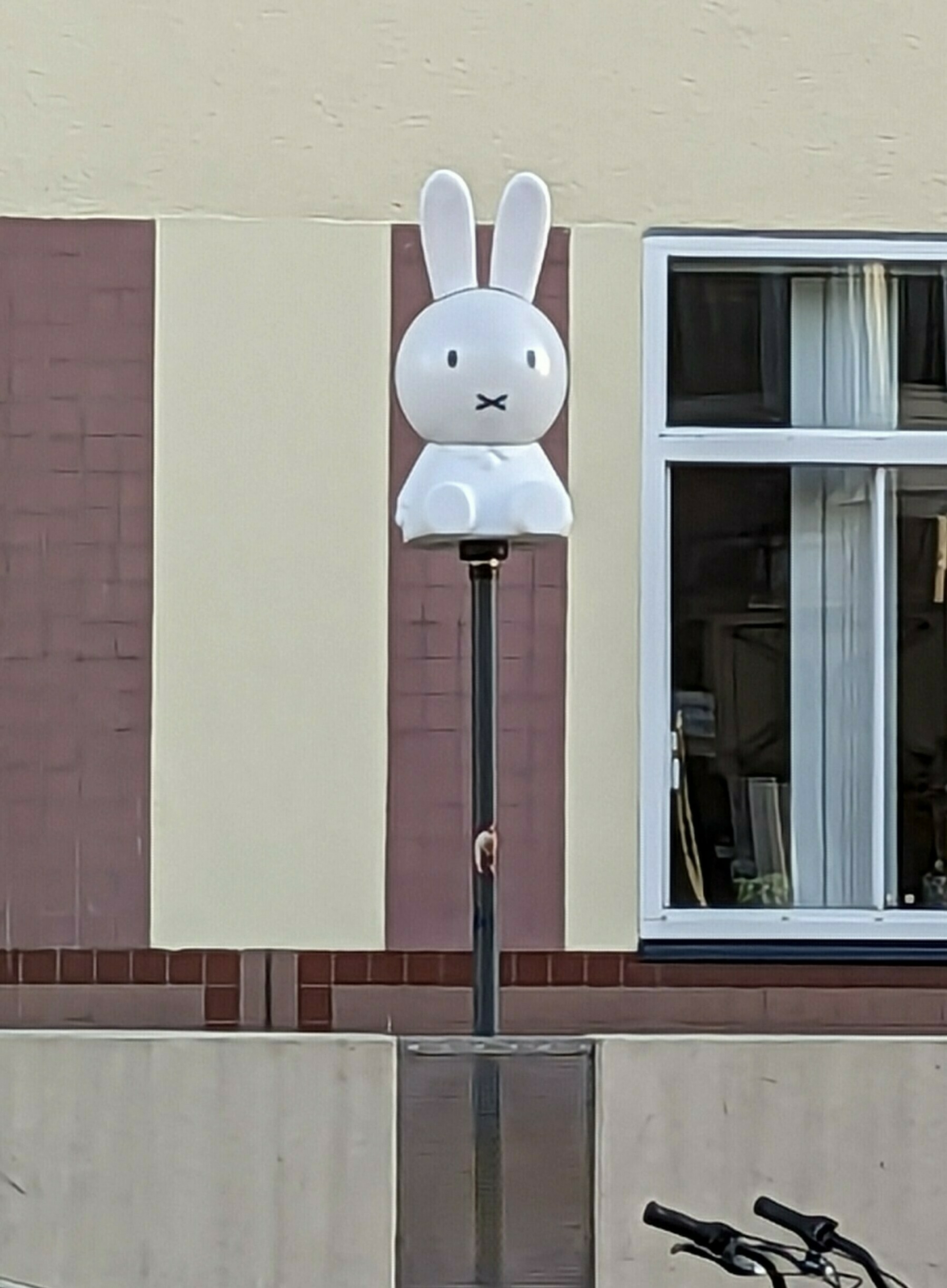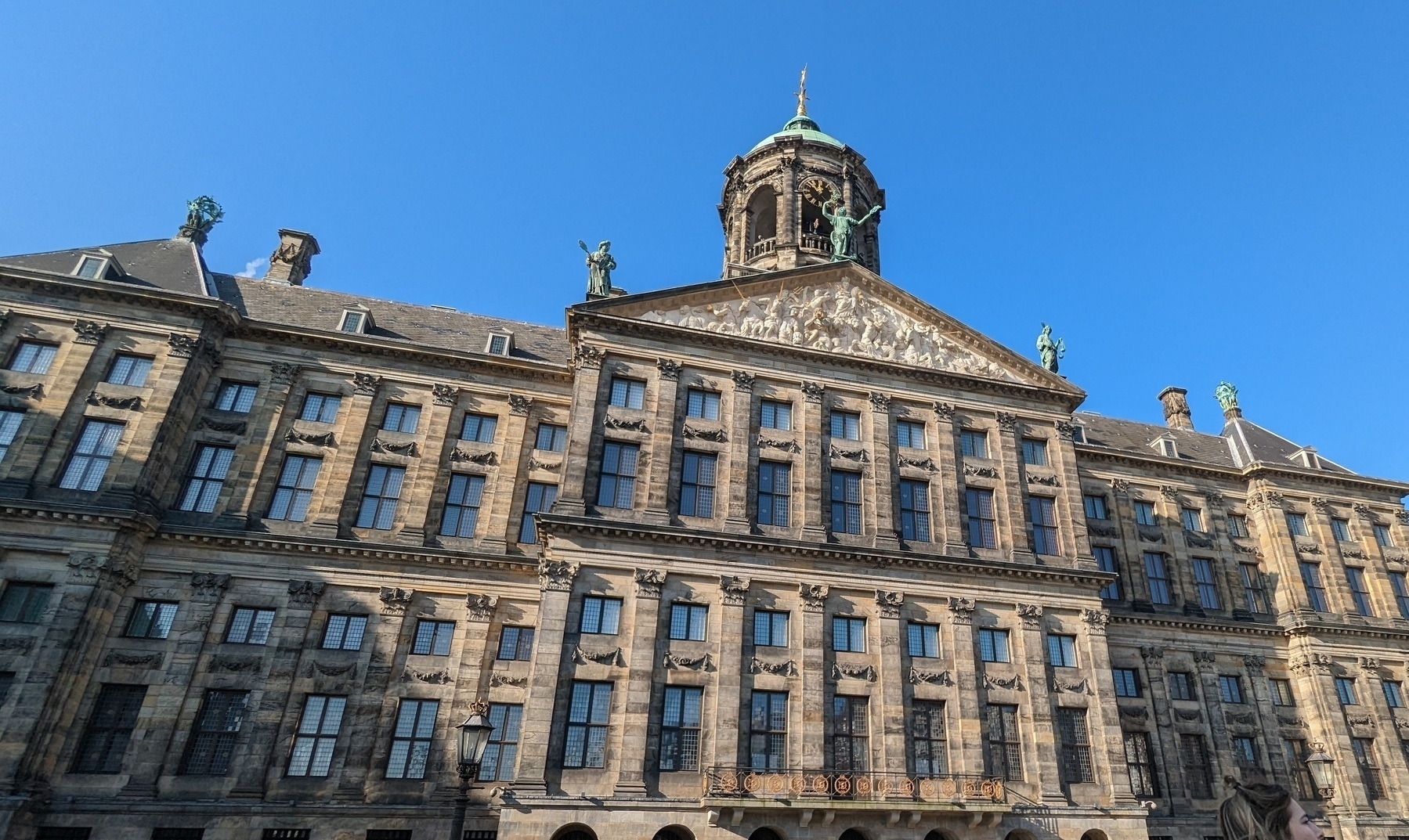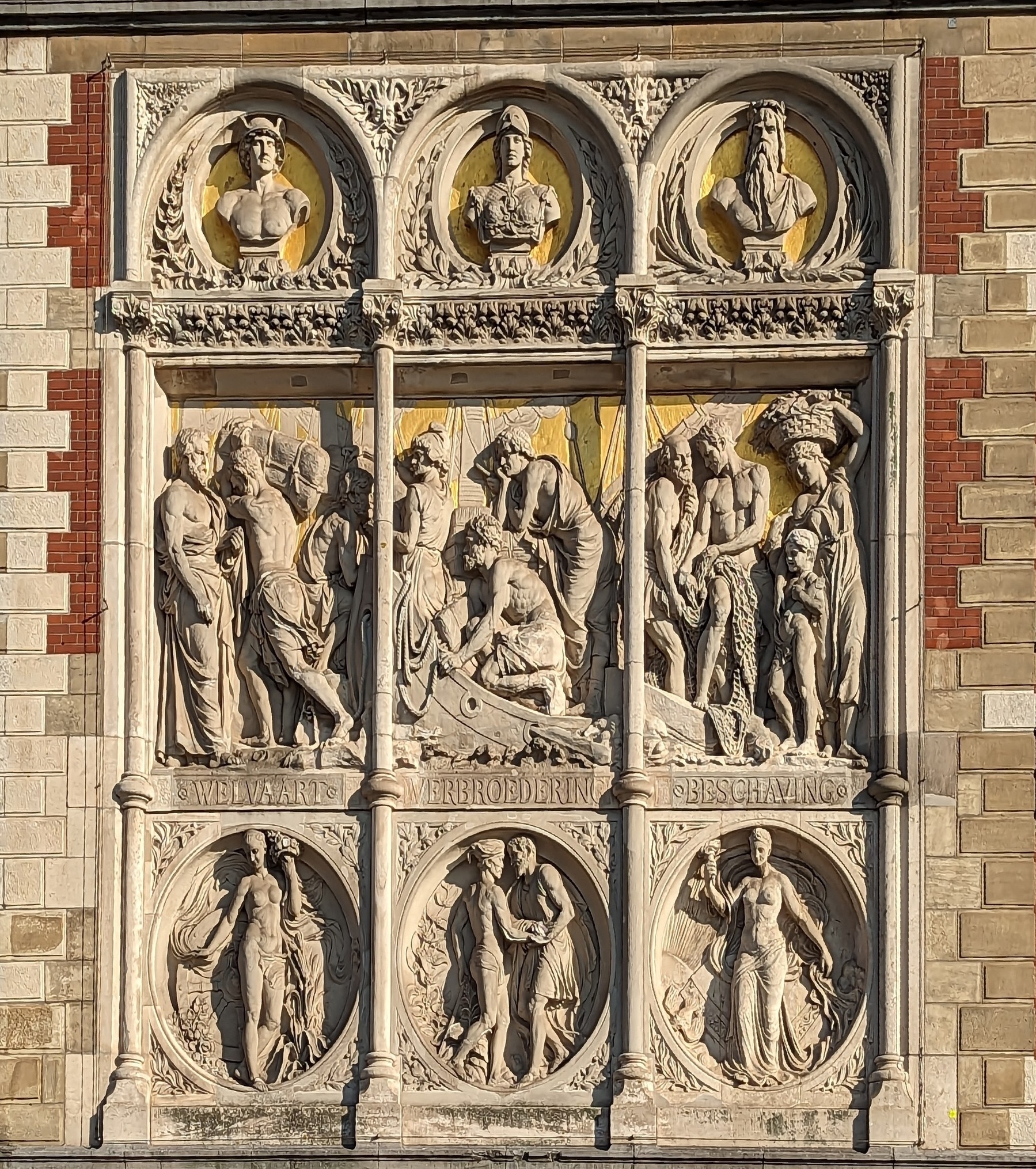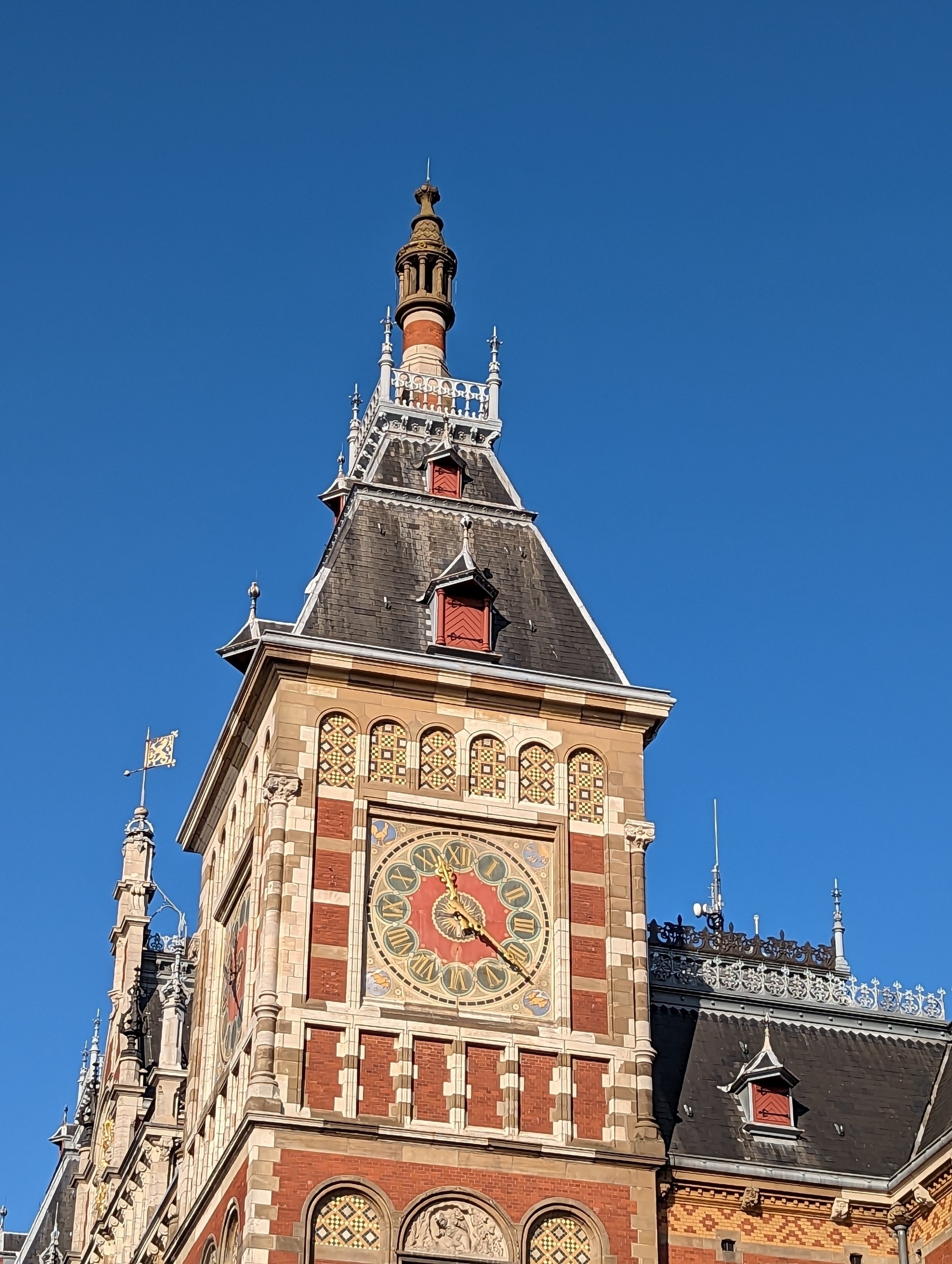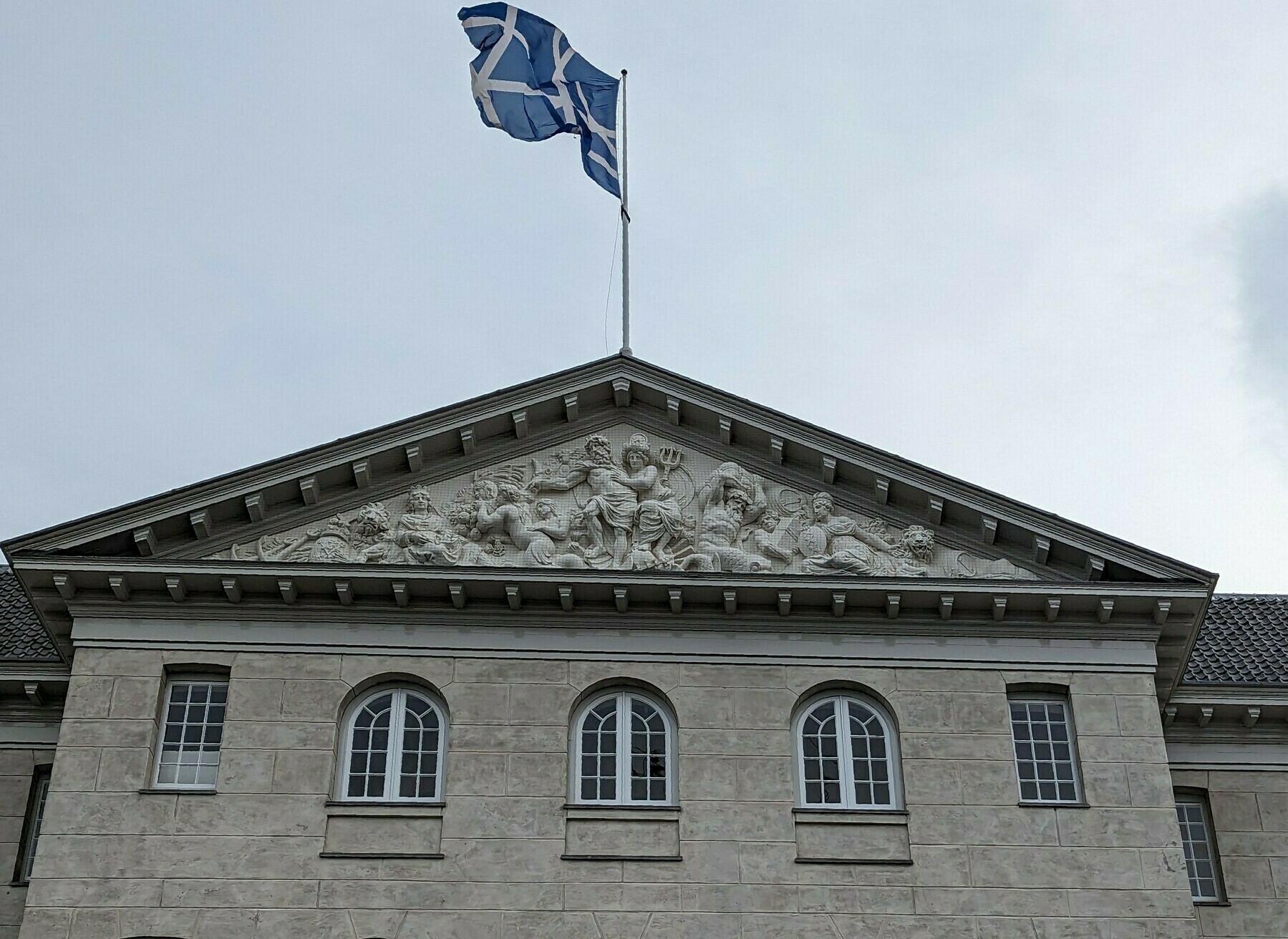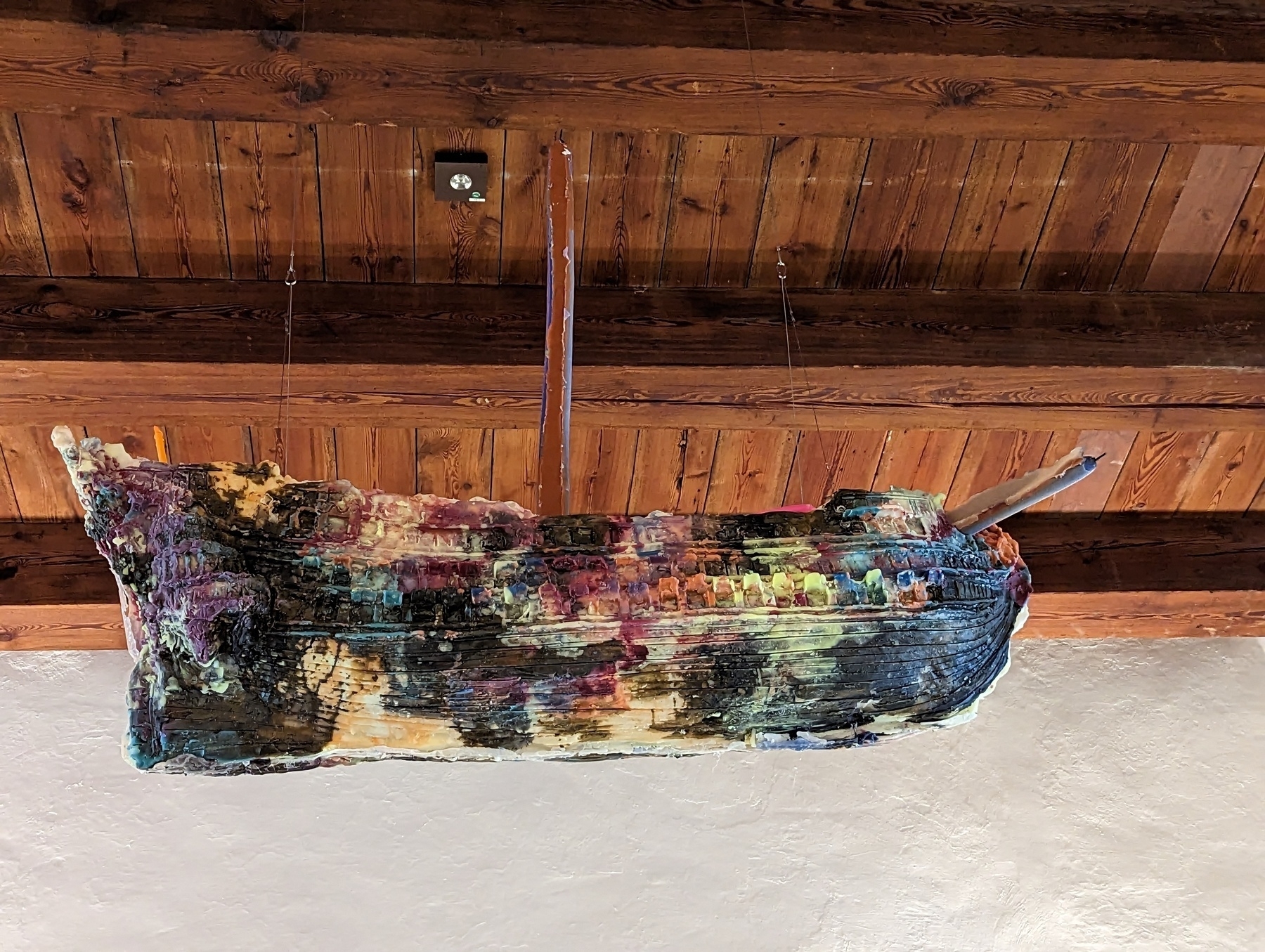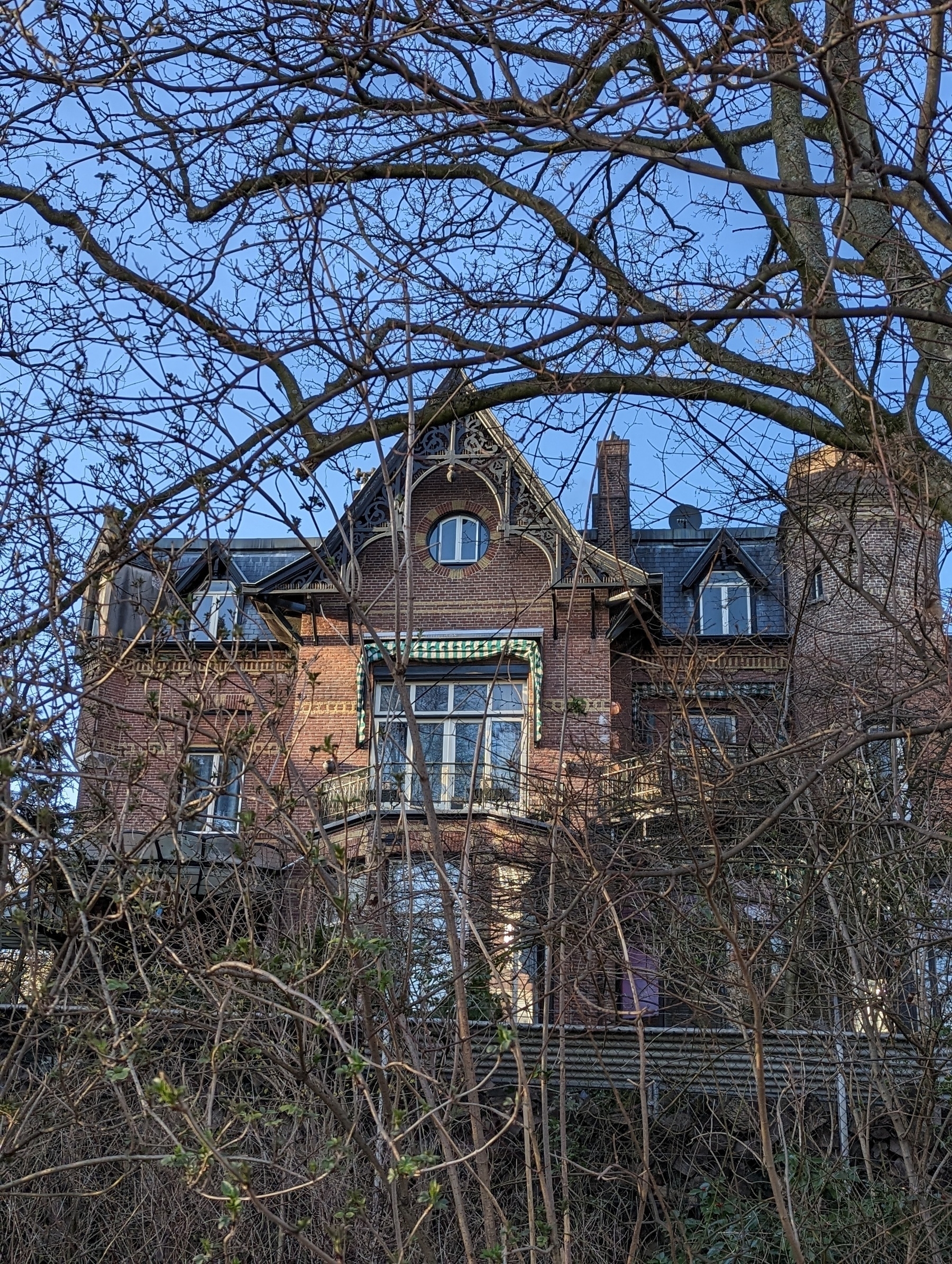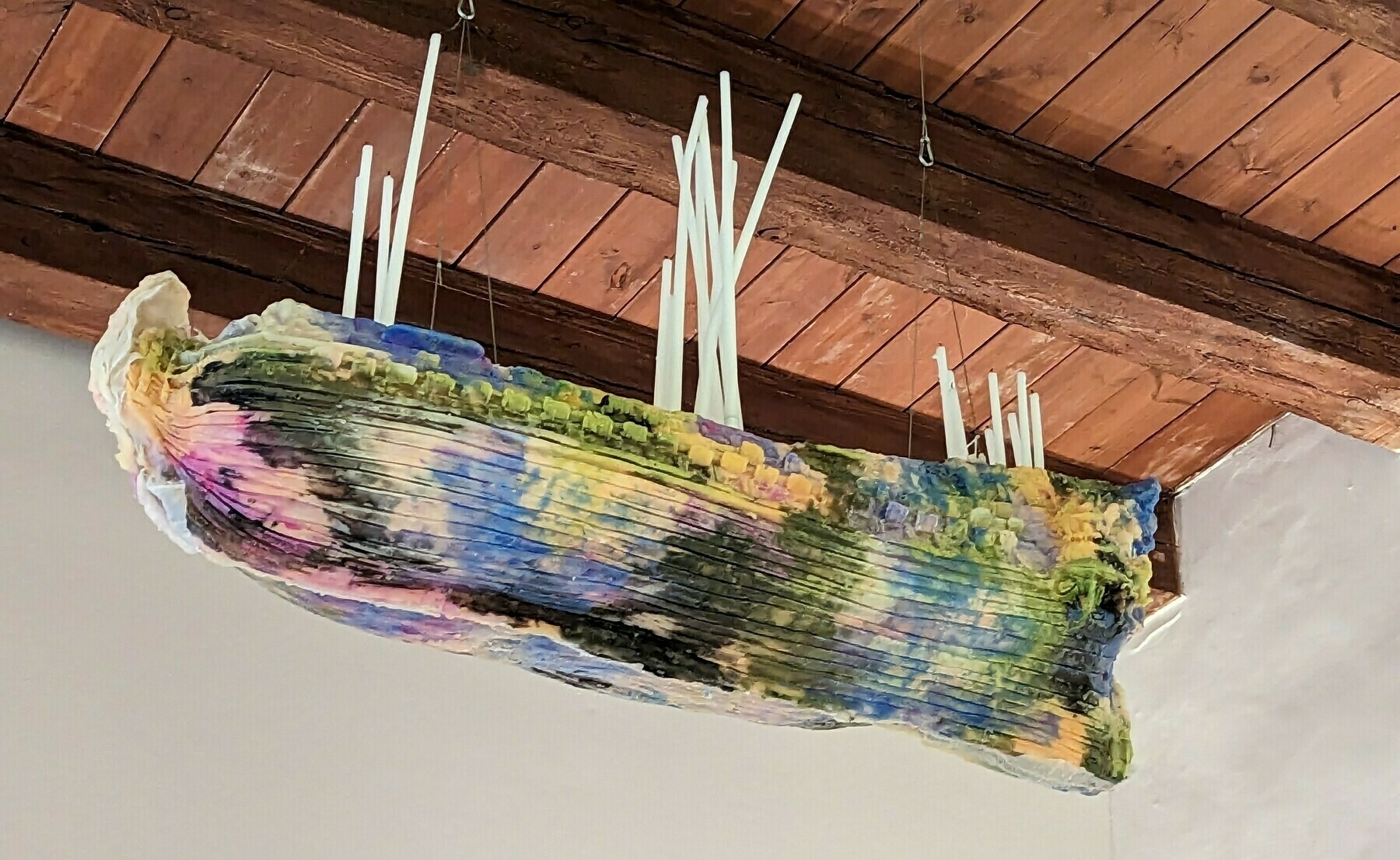Hi friends! It’s time for an Amsterdam Photo Dump! There are 8 photos here so if you’re viewing this on a timeline, be sure to click through to kimberlyhirsh.com to see them.
Here’s what you’re seeing:
- A street lamp that has been decorated to look like Nijntje (known as Miffy in English).
- The facade of the Royal Palace Amsterdam. (The word for “rabbit” in Dutch is “konijn” and the Dutch name for the Royal Palace is “Koninklijk Paleis,” so I keep trying to come up with a rabbit-palace pun.)
- A detail of a relief on the front of Amsterdam Centraal Station featuring the patron deity of our household, Athena.
- The clock tower at Amsterdam Centraal Station.
- A pedimental sculpture on the National Maritime Museum featuring Neptune, whose image is used heavily in Amsterdam due to the importance of sailing to its history and economy.
- and 8. Votive ships made of wax at the National Maritime Museum.
- A house near the Vondelpark that I thought looked cool and haunted.
